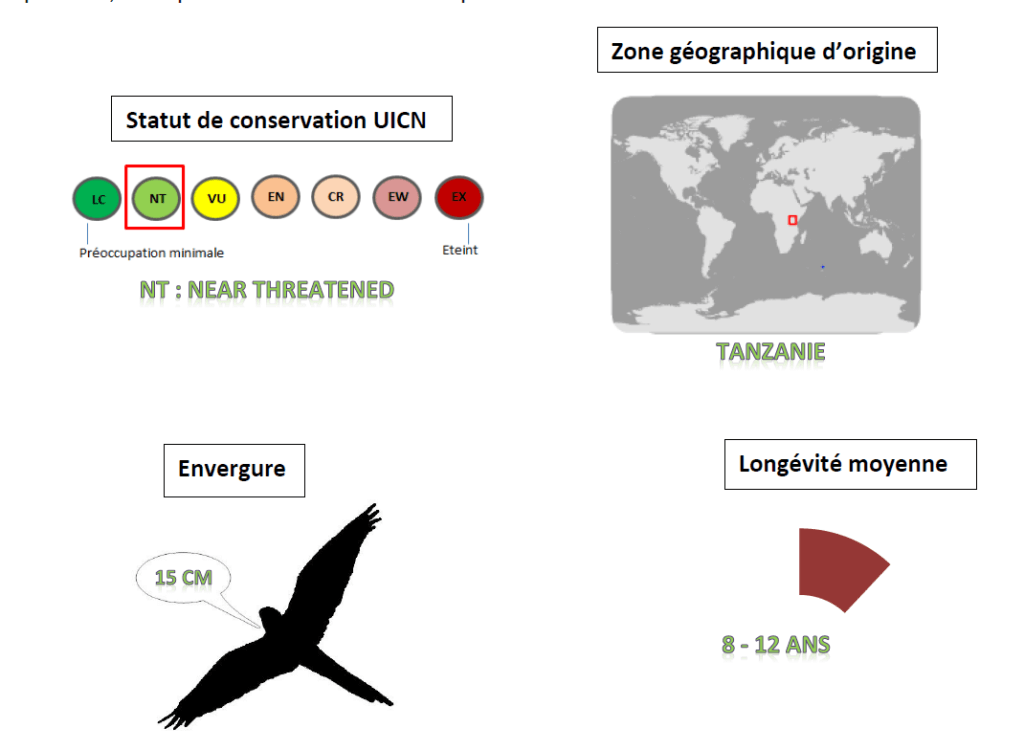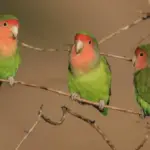 lovebird as pet Order: Psittaciformes,Familial: Psittacidae Inséparables Fischer’s lovebird Agapornis Fischeri
lovebird as pet Order: Psittaciformes,Familial: Psittacidae Inséparables Fischer’s lovebird Agapornis Fischeri
Diet Plan: CITES Appendix II, freeholding not subject to quotas ,Sex: No sexual dimorphism
Phénotype :
- Thick white eye circle
- Coral beak
- There are many phenotypic mutations
Personality: Ideal bird for beginners, even if it can be quarrelsome, especially with other species or when introducing a new individual
weight: env. 30 g
Lovebirds as Pets | Living with Lovebirds | Species Spotlight
SOURCE: Love of Pets

Lovebird as pet
INSEPARABLE BIRDS Fischer’s lovebird
Inséparables Fischer’s lovebird, Selection and maintenance of lovebirds
Lovebirds, these real little African parrots, are real little gems. Their bright and warm colors leave most people dreaming, so much so that they are often mistaken for small parrots. It is clear that this bird has a lot in common with parrots, its larger, more imposing cousins.
Even if the resemblance to the parrot is quite clear, this bird should not be considered as a “small parrot”, and maintained as such. Lovebirds are indeed small birds with very specific needs, which must necessarily be met in order to guarantee the good life and good health of your birds.
Lovebird as pet

What is the character of lovebirds?
To recognize the first characteristic of these animals, it is advisable to stick to its vernacular name: inseparable. This species takes its name from its loyalty. A couple of lovebirds is formed from life to death. Needless to imagine making a lovebird alone happy, you will only succeed for a while… until he lets himself die! This sociable animal must therefore always live in a group, at least as a couple. Do not minimize this character trait, your animals could be wasted.
Apart from this gregarious character, inseparable people enjoy an excellent character. Even if they are fearful enough, they remain small, touching animals that you can, over time, try to tame. An education from an early age can allow you to get closer to your companions.
How to care for your lovebird
SOURCE:Marisol Navarro
How to choose my lovebirds?
Note here that we do not choose an inseparable, but inseparable. For the reasons we have mentioned above, it is not possible to acquire a single bird. You will therefore always have to choose your lovebirds by a couple, even by a double couple. You can thus hope that in the event that one of the birds should die, the group could allow the survivor not to let himself die.
When you will have to choose your animals, in pet stores, or with a specialized breeder, you will have to take care not to separate the couples. Indeed, these animals very quickly form their couples, and when they are numerous you can imagine that they have already made their choice. Faithful, this animal will have great difficulty in creating a new couple. Prefer therefore to choose an already formed couple, which you have been able to identify.
To identify the pairs, observe the birds in their environment. You will quickly notice that some are systematically close to each other. They will be even more so if your presence near the cage (at the time of the sale) creates stress for them. Then make your choice.
The animals you choose will have bright plumage, clean, sparkling eyes. These few elements are a sign of good health. If you come across a bird that is moving around and has a clean cesspool, don’t worry, it’s just stressed or depressed. He may have lost his companion and in this case, prefer to take it if you already have a lovebird so that he finds the will to live.
Finally, note that if you have a couple of lovebirds and one of them dies, you can try to reform a new couple by buying a new companion. This method is far from foolproof, as the two birds may not be compatible, and in this case, you will lose both! In case you buy only one lovebird, do not break an already formed couple and prefer a solitary bird, which does not approach any other bird. His couple may not have been formed …

lovebird as pet
What cage for my lovebirds?
As with all parrots these animals need to exercise. Useless therefore to take a cage in which they will be able to simply walk, that would be likely to depress them. Prefer therefore a sufficiently spacious cage, preferably rectangular, in which they can fly at will.
To allow them to stretch their wings and reproduce as they wish, buy a cage for large parakeets. Their beak is not particularly powerful (as much as a large parakeet), you do not need a cage with reinforced bars.
Even if they are excellent breeders, lovebirds need room for this. You will also have to make sure to install a nest so that they do not have to nest on the ground, which would facilitate neither brooding nor maintenance of the cage. Provide a sufficiently large nest for the same reason.
This animal being playful, do not hesitate to install many toys in its cage, as well as a bathtub so that it can bathe.
For the location of the cage, place it at height of Man, so that this bird very observant can see everything of its environment. Again, keep it away from all sources of excessive heat (such as direct exposure to the Sun).
What food should I give my lovebirds?
Pet stores offer mixtures of seeds particularly suited to these animals. You will then choose either mixtures for lovebirds or mixtures for large parakeets. Their beak allows them to consume relatively large seeds.
You also have the possibility of making yourself the mixture that will be best suited to your birds. Indeed, not all lovebirds have the same tastes and you will have to adapt.




















